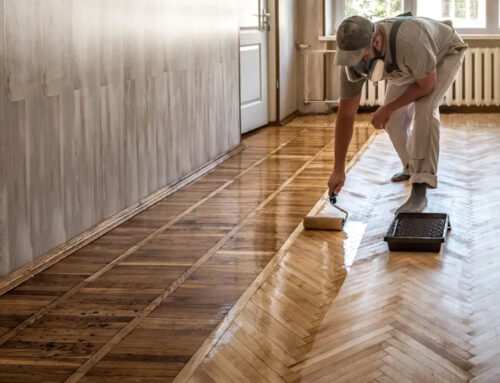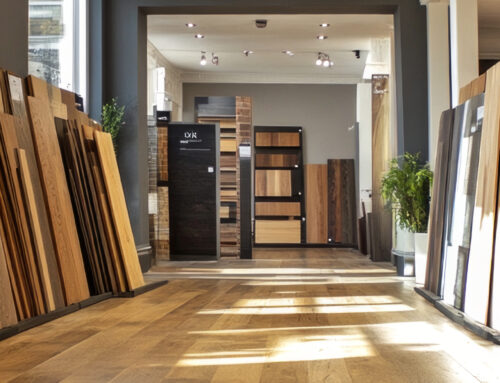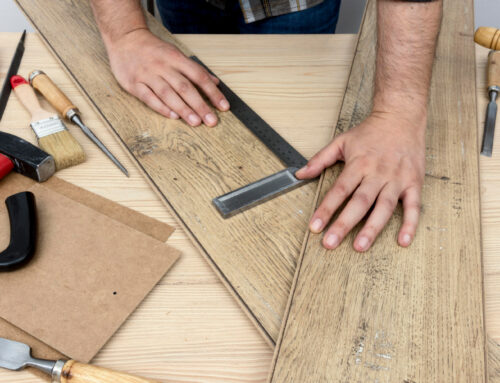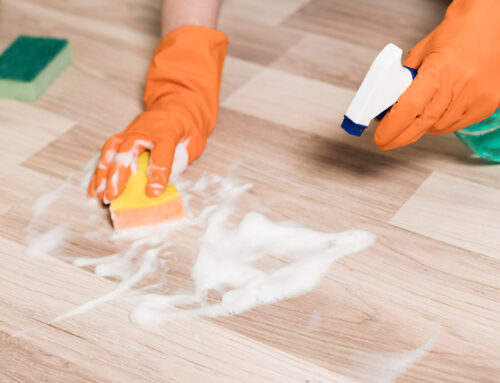Quality wholesale vinyl flooring requires 6mm to 8mm thickness, 12 mil to 20 mil wear layers, and the right core material (SPC for stability, WPC for comfort, LVP for budgets). Look for waterproof construction, safety certifications like FloorScore or GreenGuard, and click lock installation for efficiency. Pricing ranges from $1.20 to $4.50 per square foot based on specifications. Verify testing documentation, check supplier reputation, and calculate total installed costs, including labor and lifespan for true value.
The wholesale vinyl plank market is booming, projected to hit $45 billion by 2027. For contractors, retailers, property managers, and designers buying in bulk, knowing what separates quality from junk directly affects your bottom line and project success.
Wholesale buying is different from retail. You’re committing to larger quantities, dealing directly with manufacturers or distributors, and making decisions that affect dozens or hundreds of installations. One mistake costs thousands.
Best vinyl plank flooring for wholesale balances durability, looks, installation ease, and price. The best products feature proper thickness (6mm to 8mm), adequate wear layers (12 mil to 20 mil), stable cores, and verified safety certifications. They install fast, perform reliably, and deliver the design flexibility today’s market demands.
Rustic Wood Floor Supply connects professionals with premium wholesale vinyl plank that meets rigorous quality standards. Our team guides bulk buyers through specifications, ensuring every order delivers maximum value and performance.
Get In Touch with Atlanta Flooring Store Professionals: (678) 691-0533
What is Wholesale Vinyl Flooring?
Three main types exist:
- Luxury Vinyl Plank (LVP): Traditional vinyl with flexible PVC core. Most affordable at $1.20 to $2.50 per square foot wholesale. Best for residential use or light commercial, where budget matters most.
- Wood Plastic Composite (WPC): Blends wood flour with PVC for better comfort and sound absorption. Wholesale pricing runs $2.00 to $3.50 per square foot. The softer feel works great for residential projects, apartments, and hotels.
- Stone Plastic Composite (SPC): Combines limestone powder with PVC, creating the most rigid and stable core. Costs $2.20 to $4.00 per square foot wholesale but delivers superior stability and dent resistance. Perfect for commercial projects, retail spaces, and areas with temperature changes.
Wholesale differs from retail in key ways. You need significant upfront capital, but save 30% to 50% per unit. Lead times extend to 6 to 12 weeks versus immediate retail availability. Customization options like private labeling, custom colors, and unique textures become available at wholesale volumes.
Wholesale buyers get technical support, installation training, and professional warranty programs. Most relationships include dedicated account management, priority shipping, and flexible payment terms.
5 Key Construction Features to Look For in Wholesale Vinyl Flooring
Quality wholesale vinyl plank depends on thickness, wear layer, core material, surface finishing, and backing stability. Each element impacts durability, installation ease, and long-term performance.
Premium products balance these features for specific uses. Commercial installations need thicker wear layers and rigid cores. Residential projects prioritize comfort and looks. Match construction features to project requirements.
-
Thickness and Wear Layer Specifications
Optimal thickness ranges from 6mm to 8mm for most applications. Wear layer depth should measure 12 mil to 20 mil for commercial use and 6 mil to 12 mil for residential projects.
Total thickness affects stability and sound transmission. Products under 4mm flex too much during installation, creating visible seams and showing subfloor imperfections. Products over 9mm increase costs without proportional benefits except in specialized applications.
The wear layer is the transparent urethane coating protecting the printed design from scratches, stains, and UV damage.
Wear layer guidelines:
- 6 mil to 8 mil: Light residential use, bedrooms, closets. Lasts 5 to 10 years with normal traffic
- 12 mil: Standard residential and light commercial. Good for living rooms, kitchens, and offices. Expected lifespan of 10 to 15 years
- 20 mil: Heavy commercial, retail, hospitality. Designed for 15 to 25 years in high-traffic environments
- 28 mil to 30 mil: Industrial and extreme commercial. Warehouses, hospitals, and schools needing maximum durability
Verify wear layer specs independently. Some manufacturers measure from surface to core bottom rather than just the protective coating, inflating advertised thickness by 50% or more.
Request third-party testing documentation confirming wear layer depth. ASTM F1700 standards provide objective measurements. Products meeting these standards display certification marks on packaging.
-
Core Material Comparison
SPC (Stone Plastic Composite) cores deliver superior stability and dent resistance. WPC (Wood Plastic Composite) cores provide better sound absorption and comfort. Traditional LVP cores offer the most affordable option. Each suits specific applications and performance needs.
SPC benefits:
- Exceptional stability prevents expansion and contraction across temperature changes
- Superior dent resistance supports heavy furniture without permanent indentation
- Thinner profile (3.5mm to 5mm core) reduces floor height during renovations
- Performs well in direct sunlight and spaces with temperature variation
- Installs over minor subfloor imperfections without telegraphing
SPC drawbacks:
- Harder surface transmits more sound and feels less forgiving underfoot
- Requires precise subfloor preparation for proper locking engagement
- Higher costs increase budgets by 15% to 25% versus WPC
WPC benefits:
- Softer, quieter underfoot compared to SPC or traditional LVP
- Built-in sound absorption reduces noise transmission between floors
- More forgiving installation accommodates minor subfloor variations
- Warmer temperatures are preferred in residential settings, especially bedrooms
- Easier to cut and trim during installation
WPC drawbacks:
- Greater expansion and contraction require larger perimeter gaps
- Lower dent resistance shows impressions from heavy furniture
- A thicker profile (5mm to 7mm core) may create transition challenges
- Temperature sensitivity limits use near large windows or sunrooms
Traditional LVP benefits:
- Lowest wholesale cost makes large budget projects feasible
- Flexible core simplifies installation over uneven surfaces
- Wide availability across manufacturers and distributors
- Familiar installation process for most professionals
Traditional LVP drawbacks:
- The least dimensional stability requires a controlled environment installation
- Lower dent and scratch resistance reduces lifespan in commercial settings
- Minimal sound absorption properties
- Less premium appearance and feel compared to SPC or WPC
Match core material to project specifics. Commercial retail spaces benefit from SPC stability. Multi-family developments gain value from WPC comfort and sound control. Budget renovations work well with vinyl flooring wholesale suppliers.
-
Surface Finish and Texture Quality
High-quality wholesale vinyl features HD printing with registered embossing that aligns surface texture precisely with the printed wood grain. This synchronization between visual and tactile elements creates authentic wood replication.
Surface finishing includes three critical layers working together:
Print Layer Quality
Print layer quality determines visual realism. Premium products use 8 color to 12 color printing processes, capturing authentic wood grain variations, knot details, and natural color gradations. Budget products rely on 2-color to 4-color printing, producing repetitive, artificial patterns.
Examine print quality by laying out 10 to 15 planks side by side. Premium products show minimal pattern repetition. Lower quality products repeat identical patterns every 3 to 5 planks, creating an obvious artificial appearance.
Embossing Technology
Embossing technology adds physical texture, matching the printed pattern. Three embossing levels exist:
- Smooth finish: Flat surface with no texture. Least expensive but appears obviously synthetic
- Standard embossing: Generic wood grain texture applied uniformly regardless of printed pattern
- Registered embossing: Advanced technique aligning texture precisely with printed grain. Premium option adding $0.30 to $0.60 per square foot
Registered embossing creates an authentic tactile experience. Your fingers feel grooves exactly where visual grain patterns appear, matching real wood behavior.
Protective Coating
Protective coating seals everything while providing scratch and stain resistance. Ceramic bead coatings offer superior protection compared to standard urethane. These microscopic ceramic particles increase surface hardness, extending wear layer life by 20% to 30%.
Additional protective features worth verifying:
- UV coating: Prevents fading in spaces with natural light
- Antimicrobial treatment: Inhibits bacteria and mold growth
- Enhanced stain guard: Resists absorption from common spills
- Slip-resistant additives: Improves safety in kitchens and bathrooms
Request samples from wholesale suppliers showing their full product line. Compare texture depth, print quality, and finish durability across price points.
-
Locking Mechanism Quality
Quality locking systems create tight seams that resist separation during temperature changes and heavy traffic. The locking mechanism determines installation ease and long-term performance.
Three main locking types exist:
- Angle tap systems: Plank angle into position, then tap down flat. Most common in wholesale products. Easy to learn but requires more physical effort during installation.
- Drop lock systems: Planks drop straight down into a locked position. Fastest installation method, saving 15% to 20% on labor. Premium option found in higher-priced products.
- Modified uniclic systems: Proprietary designs combining angle and drop features. Varies by manufacturer but generally offers a good balance of ease and security.
Test locking mechanisms by connecting and disconnecting sample planks repeatedly. Quality systems lock and unlock smoothly without damaging edges. Poor systems feel stiff, require excessive force, or show edge damage after a few cycles.
Check for these locking system features:
- Metal locking strips: Aluminum or steel reinforcement increases durability
- Tight tolerances: Minimal gaps between locked planks indicate precision manufacturing
- Multiple locking points: Some systems lock along both long and short edges simultaneously
- Easy replacement: Quality systems allow for the removal and replacement of individual damaged planks
5. Backing and Underlayment Options
Attached underlayment saves installation time and ensures consistent performance. Quality backing materials prevent moisture transmission and improve acoustic properties.
Three backing configurations exist in wholesale vinyl plank:
- Bare backing: No attached underlayment requires a separate underlayment purchase and installation. Adds labor and material costs but allows customizing underlayment to specific needs.
- Attached foam underlayment: Thin foam layer (1mm to 2mm) provides basic cushioning and minor sound absorption. Most common in mid-tier products. Adequate for most residential applications.
- Attached cork underlayment: Premium option offering superior sound absorption and comfort. Cork naturally resists moisture, mold, and mildew. Adds $0.40 to $0.80 per square foot to wholesale costs.
For multi-family housing, specify products with attached underlayment rated IIC 55 or higher. This meets building codes while eliminating separate underlayment installation.
Choosing the right construction features affects project success and client satisfaction. Our product specialists help wholesale buyers match specifications to requirements, ensuring optimal performance within budget constraints. Connect with our team for personalized recommendations or take a look at our vinyl flooring collection!
Browse Boise Vinyl Flooring Options at Wholesale Prices: (678) 691-0533
Performance and Installation Considerations
Performance depends on water resistance ratings, sound transmission characteristics, and installation method compatibility. These practical factors determine real-world functionality beyond construction quality.
Projects succeed when products match actual use conditions. Match performance specifications to project requirements.
Water Resistance Ratings
Quality wholesale vinyl plank offers 100% waterproof construction through the entire plank thickness. Sound absorption ratings should meet IIC 50 to IIC 55 for multi-family applications.
Water resistance falls into three categories:
- Water resistant: Traditional construction resists surface moisture but allows water penetration at seams over time. Suitable for areas with occasional spills but not true wet environments. Most budget wholesale LVP falls here.
- Enhanced water resistance: Improved sealing at locking mechanisms and edges extends moisture protection. Handles typical kitchen and bathroom humidity but not standing water. Mid-tier wholesale products offer this level.
- 100% waterproof: Complete waterproof construction through the entire plank, including core. Suitable for bathrooms, laundry rooms, basements, and commercial kitchens. Premium SPC and WPC wholesale products deliver full waterproof performance.
Verify waterproof claims through testing documentation. ASTM F2170 testing measures moisture vapor transmission. Products rated waterproof should show test results confirming zero moisture penetration after 72-hour immersion.
Sound Absorption Properties
Sound performance matters significantly for apartments, condos, and commercial spaces. Two ratings measure acoustic performance:
- IIC (Impact Insulation Class): Measures how well flooring reduces impact noise transmission. Walking, dropped objects, and furniture movement create impact noise. Building codes typically require IIC 50 for multi-family dwellings. Premium products with attached underlayment achieve IIC 55 to IIC 65.
- STC (Sound Transmission Class): Measures airborne sound reduction. Conversations, television, and music create airborne sound. STC 50 represents minimum standards for most commercial and multi-family applications.
Wholesale vinyl plank improves acoustic performance through:
- Attached cork or foam underlayment: Adds a cushioning layer bonded to the plank bottom
- WPC core composition: Softer material naturally absorbs more sound than rigid SPC
- Increased thickness: Thicker overall construction reduces sound transmission
Multi-family projects should specify products with attached underlayment rated IIC 55 or higher. This eliminates separate underlayment installation, reducing labor costs while ensuring consistent acoustic performance.
Installation Methods for Bulk Projects
Click lock installation dominates wholesale projects due to 40% to 50% labor cost savings compared to glue-down methods. Each installation approach offers specific advantages for bulk purchasing.
Click lock (floating floor) installation:
Most popular method featuring interlocking tongue and groove edges. Planks connect mechanically without adhesive, floating over underlayment as a single unit.
Advantages for wholesale projects:
- Installation speed of 200 to 300 square feet per worker per day
- No adhesive curing time allows immediate use
- Easy replacement of damaged planks without affecting the surrounding areas
- Suitable for DIY installations, reducing labor costs
- Works over most existing flooring types
Limitations:
- Requires smooth, level subfloors within 3/16 inch over 10 feet
- Cannot install in permanently wet areas without perimeter sealing
- Slight hollow sound without quality underlayment
- Expansion gaps required around the perimeter (typically 1/4 inch)
Glue-down installation:
Planks adhere directly to the subfloor using pressure-sensitive or wet adhesive. Creates a permanent installation with maximum stability.
Advantages for wholesale projects:
- Most stable installation for commercial high traffic areas
- No hollow sound or movement underfoot
- Suitable for areas with rolling loads like retail spaces
- Better for radiant heat applications
- No expansion gaps required around the perimeter
Limitations:
- Labor-intensive, requiring 100 to 150 square feet per worker per day
- Adhesive costs add $0.50 to $1.00 per square foot
- Requires 24 to 48 hours of curing before use
- Difficult and expensive to remove or replace damaged planks
Loose lay installation:
Specialty products using friction and weight to stay in place without adhesive or locking mechanisms. Features a rubberized backing, creating grip against the subfloor.
Advantages for wholesale projects:
- Fastest installation at 300 to 400 square feet per worker per day
- Easiest replacement of damaged areas
- Ideal for temporary installations or frequently reconfigured spaces
- No subfloor adhesive or moisture barrier required
Limitations:
- Limited to areas under 2,000 square feet without perimeter adhesive
- Not suitable for high-traffic commercial applications
- Higher material costs due to specialized backing
- May shift under rolling loads
For most wholesale buyers, click lock installation delivers an optimal balance of cost, speed, and performance. Specify glue down only for commercial spaces with extreme traffic or rolling loads.
Safety, Air Quality, and Sustainability
Quality wholesale vinyl plank meets strict VOC emission standards, excludes harmful phthalates, and carries third-party certifications verifying safety. These factors protect occupant health while meeting building codes.
VOC Standards and Certifications
Premium wholesale vinyl plank emits less than 0.5 mg per square meter per hour of VOCs and excludes ortho-phthalate plasticizers entirely. Third-party certifications from FloorScore, GreenGuard Gold, or similar programs verify these standards.
Volatile Organic Compounds (VOCs) are chemicals that off-gas from flooring materials into indoor air. Extended VOC exposure causes headaches, respiratory irritation, and long-term health effects.
Key VOC certifications for wholesale vinyl plank flooring:
- FloorScore: Certifies products meet California Section 01350 standards, the most stringent VOC requirements in North America
- GreenGuard Gold: Verifies low chemical emissions suitable for schools and healthcare facilities
- CE marking: European certification indicating compliance with health, safety, and environmental standards
Request certification documentation from wholesale suppliers. Legitimate certifications include independent lab testing results showing specific VOC emission levels. Avoid suppliers making vague “low VOC” claims without supporting documentation.
Phthalate Free Verification
Phthalates serve as plasticizers, making vinyl flexible. Several phthalate types pose health risks, particularly ortho-phthalates linked to endocrine disruption. Modern vinyl plank manufacturing uses phthalate-free plasticizers or alternative compounds.
Verify phthalate-free status through:
- Third-party testing confirming zero ortho-phthalates
- Manufacturer declarations of non-phthalate plasticizer use
- Certifications from programs specifically testing for phthalate content
Additional Safety Considerations
- Fire resistance: Commercial projects require Class 1 or Class A fire ratings. ASTM E648 testing measures critical radiant flux. Products scoring 0.45 watts per square centimeter or higher meet Class 1 requirements.
- Slip resistance: Commercial and healthcare applications need verified slip resistance. DCOF (Dynamic Coefficient of Friction) ratings above 0.42 meet ADA requirements for level surfaces.
- Antimicrobial protection: Built-in antimicrobial treatments inhibit bacteria, mold, and mildew growth. Particularly important for healthcare, food service, and education facilities.
Environmental Responsibility
Sustainable wholesale vinyl plank contains 20% to 40% recycled content and comes from manufacturers participating in product take-back programs. Environmental responsibility increasingly influences purchasing decisions for corporate, institutional, and green building projects.
Post-consumer recycled content reduces environmental impact while maintaining performance. Quality manufacturers incorporate recycled vinyl from previous flooring products, manufacturing waste, and post-industrial sources.
Recycled content levels in wholesale vinyl plank:
- Pre-consumer (post-industrial): Manufacturing scraps are recycled back into new flooring. Easier to incorporate, maintains consistent quality
- Post-consumer: Used flooring collected, processed, and recycled. More environmentally beneficial but technically challenging
- Typical range: Quality products contain 15% to 35% total recycled content
Environmental certifications to look for:
- Cradle to Cradle: Comprehensive certification evaluating material health, material reutilization, renewable energy use, water stewardship, and social fairness. Products are rated Bronze, Silver, Gold, or Platinum.
- NSF/ANSI 332: Sustainability standard specifically for resilient flooring. Certifies bio-based content, recycled content, product manufacturing innovation, and end-of-life management.
- EPD (Environmental Product Declaration): Independently verified document reporting environmental impacts throughout the product lifecycle. Provides transparency for LEED and green building projects.
Planning a large-scale flooring project requiring specific environmental certifications or safety standards? We provide complete documentation and guidance on meeting LEED, WELL Building, and other green building requirements. Our wholesale inventory includes certified products that deliver both performance and environmental responsibility.
Trends and Design Options in Vinyl Planks
Current vinyl plank design trends favor wider planks (7 to 9 inches), longer lengths (48 to 72 inches), mixed-width installations, and authentic hand-scraped textures. These aesthetics dominate 2025 wholesale specifications.
Design flexibility increasingly drives wholesale selection. Projects demand authentic wood replication, on-trend colors, and installation patterns, creating custom appearances.
Popular Styles for 2025
The 2025 vinyl plank flooring market emphasizes European oak looks, whitewashed finishes, mixed-width collections, herringbone patterns, and chevron installations. These styles span residential, commercial, and hospitality applications.
Wide plank formats dominate current specifications. Traditional 4-inch to 6-inch widths give way to 7-inch to 9-inch planks, creating a more authentic hardwood appearance. Extra-wide 10-inch to 12-inch planks suit contemporary and minimalist designs.
Color trends in 2025:
- Warm neutrals: Honey tones, natural browns, and medium oak shades remain popular
- Whitewashed and limewashed: Light finishes with visible grain create Scandinavian and coastal aesthetics
- Gray tones: Cooler grays with brown undertones bridge modern and traditional styles
- Deep rich browns: Dramatic dark finishes for luxury residential and hospitality
- Mixed tone collections: Products blending 3 to 5 color variations in single orders
Texture and surface trends:
- Hand-scraped edges: Beveled edges with distressed scraping mimicking antique floors
- Wire brushed surfaces: Subtle texture highlighting grain patterns
- Smooth matte finishes: Clean contemporary look without gloss or heavy texture
- Rustic character marks: Knots, cracks, and color variation create a reclaimed wood appearance
Installation Pattern Options
Traditional straight lay installations continue dominating due to speed and material efficiency. However, premium projects increasingly specify:
- Herringbone patterns: Planks installed at 90-degree angles, creating distinctive V patterns. Adds 25% to 35% to material requirements due to waste. Installation labor increases 50% to 75% compared to straight installations.
- Chevron patterns: Similar to herringbone, but planks cut at angles meeting in continuous lines. Requires factory-cut planks, increasing material costs by 30% to 40%. Stunning visual impact for luxury residential and boutique commercial.
- Mixed-width installations: Combining 5-inch, 7-inch, and 9-inch planks in random patterns. Creates a custom appearance resembling authentic reclaimed wood floors. Minimal waste increase but requires careful layout planning.
- Ashlar patterns: Rectangular tiles or planks installed in staggered brick-like patterns. Popular for stone visual products in commercial applications.
For wholesale orders, specify installation patterns during purchase. Some patterns require specific plank lengths, custom cutting, or increased quantities to accommodate waste factors.
Customization for Large Orders
Wholesale orders exceeding 10,000 square feet often qualify for customization, including unique colorways, private labeling, custom textures, and exclusive designs. These options create product differentiation for retailers and builders.
Private labeling opportunities:
Manufacturers apply your branding to packaging, cartons, and sometimes products themselves. Minimum orders typically start at 20,000 to 50,000 square feet. Private labeling creates brand equity, prevents direct price comparison, and allows markup control.
Private label programs include:
- Custom packaging design with your logo and branding
- Product names and series designations
- Marketing materials and product literature
- Exclusive colorways or textures
- Modified warranty programs under your brand
Custom color development:
Creating exclusive colors requires substantial minimums, typically 50,000 to 100,000 square feet per color. Process involves selecting a base product, developing a custom color through sampling, creating registered embossing matching new patterns, and production lead times of 12 to 16 weeks.
Custom colors provide a competitive advantage for retailers, ensure color coordination for designers, and create brand distinction for property developers.
Texture customization:
Modifying surface texture or embossing patterns requires similar minimums to color customization. Options include adjusting embossing depth, creating unique wire brush or hand-scraped effects, developing exclusive registered embossing dies, and modifying gloss levels.
Customization increases lead times from standard 6 to 8 weeks to 12 to 20 weeks, depending on modifications required. Plan projects accordingly when specifying custom products.
Final Questions to Ask Before Purchasing Wholesale Vinyl Plank
Before committing to wholesale purchases, verify specifications, understand warranty coverage, confirm lead times, and establish clear return policies. These critical details prevent costly surprises and project delays.
Essential questions for wholesale suppliers:
Product specifications and testing:
- Can you provide complete technical specification sheets?
- What third-party testing supports your performance claims?
- Do you have current certification documents (FloorScore, GreenGuard, etc.)?
- How do you measure wear layer thickness?
- What is the actual core density and composition?
Warranty and support:
- What does the warranty cover specifically (wear, fading, staining, waterproofing)?
- What is the warranty length for commercial versus residential use?
- Does the warranty cover labor or just materials?
- What documentation is required for warranty claims?
- How long do you maintain warranty service?
Ordering and logistics:
- What are the minimum order quantities?
- What lead times should I expect for standard products?
- Do you maintain inventory or manufacture to order?
- What are the shipping costs to my location?
- Can you deliver to multiple job sites from a single order?
- What payment terms do you offer?
Quality control:
- What is your acceptable quality tolerance for defects?
- How do you handle shade variation complaints?
- Can I inspect products before shipment?
- What is your return policy for unused material?
- How do you handle damaged shipments?
Request everything in writing. Verbal assurances mean nothing without documentation. Quality wholesale suppliers provide comprehensive written documentation without hesitation.
Final Call
Selecting quality wholesale vinyl plank comes down to matching specifications to your project needs. Focus on adequate wear layers (12 mil to 20 mil), appropriate core materials (SPC for stability, WPC for comfort), verified waterproof construction, and proper safety certifications. These fundamentals determine long-term performance.
Don’t chase the cheapest price. Calculate total installed costs, including labor, maintenance, and expected lifespan. Request samples, verify certifications independently, and check supplier references before committing. Quality wholesale relationships become valuable long-term assets.
About Rustic Wood Floor Supply
Rustic Wood Floor Supply has built our reputation on delivering exactly what we promise. Our wholesale vinyl plank inventory includes carefully curated products from manufacturers who meet our rigorous quality standards. We don’t carry every option available. We stock the ones that perform.
Every product in our wholesale catalog includes verified third-party testing documentation. We confirm VOC compliance, waterproof ratings, wear layer specifications, and safety certifications before adding products to our inventory. You receive complete technical specification sheets with every order, eliminating guesswork about what you’re actually buying.
Call our experts at Rustic Wood Floor Supply for personalized wholesale vinyl plank recommendations and competitive pricing on your next project. Our flooring experts are ready to help you select products that deliver exceptional performance without exceeding your budget!
Explore Flooring Products to Shop Now
Frequently Asked Questions
What should I look for in a good quality wholesale vinyl plank product?
Look for 12 mil to 20 mil wear layers, 6mm to 8mm thickness, SPC or WPC cores, registered embossing, and waterproof ratings. Verify FloorScore or GreenGuard certifications, warranty coverage, and manufacturer testing documentation.
Is there a difference between retail and wholesale vinyl plank flooring?
Yes. Wholesale requires bulk orders of 2,000 to 10,000 square feet at 30% to 50% lower costs. It offers customization options, dedicated support, and professional warranties unavailable at retail, but it involves extended lead times.
How do I verify if a wholesale vinyl supplier is reputable?
Request customer references, verify certifications independently, examine product samples, check credentials and insurance, and review warranty terms. Quality suppliers provide comprehensive documentation and welcome due diligence without pressure tactics or hesitation.
What are the most important specs (thickness, wear layer, core type) for wholesale vinyl planks?
Prioritize wear layer thickness (12 mil minimum commercial, 20 mil heavy traffic), overall thickness (6mm to 8mm), and core type (SPC for stability, WPC for comfort). Also, verify waterproof construction and locking mechanism quality.
Can I buy directly from manufacturers, or do I have to go through distributors and retailers?
Many manufacturers sell directly to buyers meeting 10,000 to 50,000 square foot minimums. Distributors offer smaller minimums and faster delivery. Direct relationships provide better pricing and customization but require larger commitments and longer lead times.
Author Profile
- I have worked in hardwood flooring for the last 8 years. Use to run a company of residential crews as well as a company with gym flooring. If you need floor installation or refinishing help, I should have an answer or at least get you in the right direction.
Latest entries
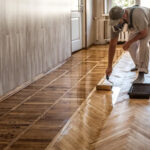 FlooringDecember 10, 2025Wood Floor Restoration in Atlanta: What Affects the Cost
FlooringDecember 10, 2025Wood Floor Restoration in Atlanta: What Affects the Cost FlooringDecember 8, 2025Top 6 Wholesale Hardwood Flooring Solutions for Your Home & Office – Boise, ID
FlooringDecember 8, 2025Top 6 Wholesale Hardwood Flooring Solutions for Your Home & Office – Boise, ID FlooringNovember 25, 2025What Engineered Hardwood Flooring Will Last Longest?
FlooringNovember 25, 2025What Engineered Hardwood Flooring Will Last Longest?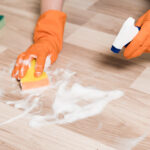 FlooringNovember 22, 2025Best Wood Floor Cleaner Liquid for Hardwood Flooring
FlooringNovember 22, 2025Best Wood Floor Cleaner Liquid for Hardwood Flooring

